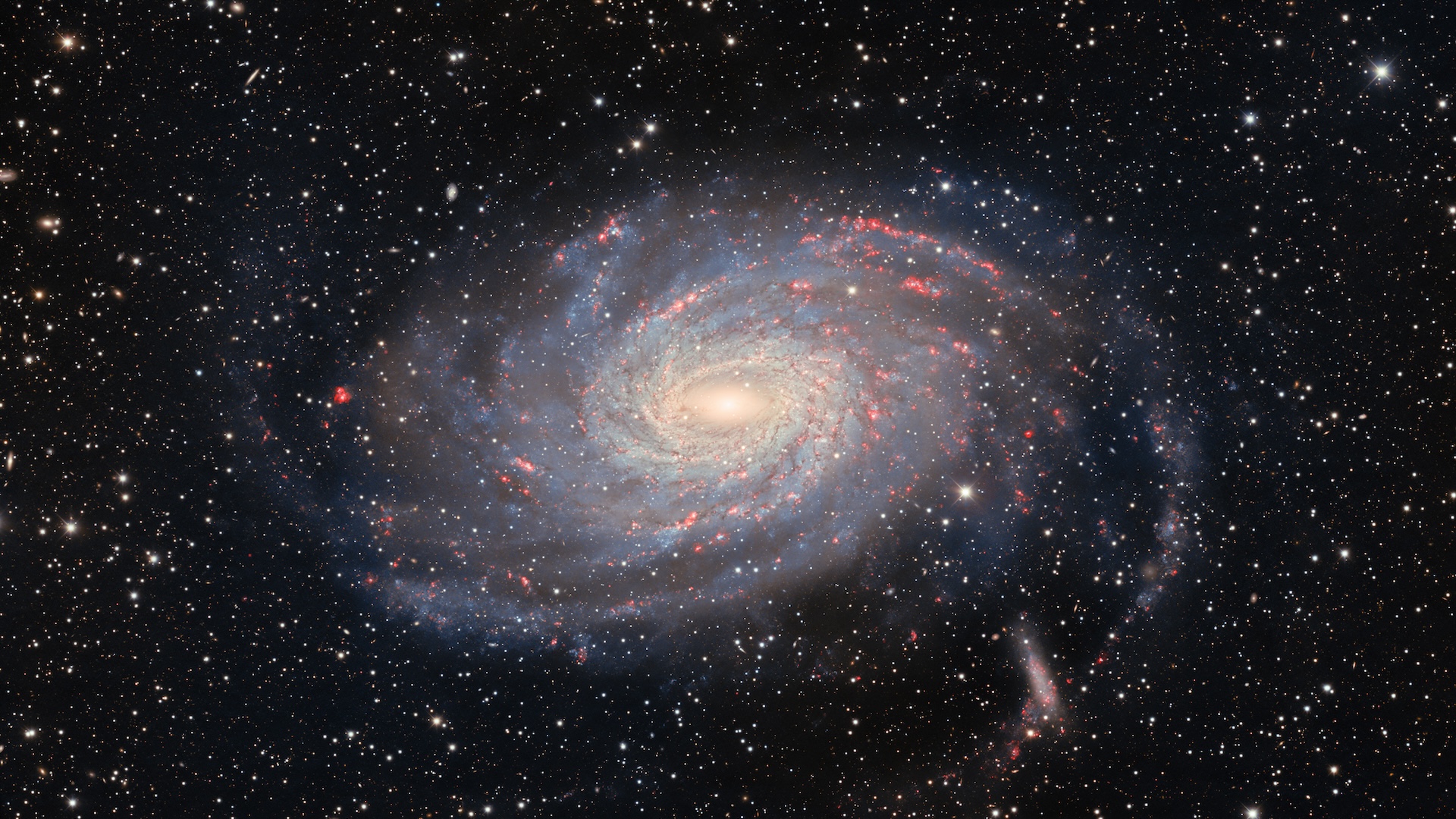Space photo of the week: Milky Way's galactic twin captured by Dark Energy Camera
NGC 6744 is a spiral galaxy bigger than, but otherwise very similar to, our own. NASA has dubbed the large spiral galaxy the Milky Way’s ‘big brother’.

What it is: Spiral galaxy NGC 6744
Where it is: 30 million light-years away in the constellation Pavo
When it was shared: Aug. 21, 2024
Why it's so special: Because we're embedded within the Milky Way and there's no way of sending spacecraft much further than the solar system's edge, astronomers have no way of taking an image of our home galaxy. So, to better understand how the Milky Way looks from the outside, and to learn more about how it formed and is evolving, scientists have to study other spiral galaxies. One of the best examples is NGC 6744, a spiral galaxy that’s very similar to our own.
With spiral arms spanning 175,000 light-years across, NGC 6744 is larger than the Milky Way, which spans about 100,000 light-years, according to NASA. About 60% of all galaxies are considered spirals, so most of the stars in the universe are located within them — and NGC 6744 is considered an archetype of this type of galaxy.
This spectacular new image of NGC 6744 features a bright nucleus and the lanes of dust that fuel star formation. To the left of NGC 6744 is a faint arm not seen in most images of the galaxy, while to the lower right, at the end of a spiral arm, is a faint companion galaxy known as NGC 6744A.
Related: James Webb telescope spots 6 enormous 'rogue planets' tumbling through space without a star
Get the world’s most fascinating discoveries delivered straight to your inbox.
The image — one of the most detailed of NGC 6744 ever taken — was created using the Dark Energy Camera (DECam) on the Víctor M. Blanco 4-meter Telescope at the U.S. National Science Foundation's Cerro Tololo Inter-American Observatory, a program of NSF NOIRLab that's based on a mountaintop near La Serena in Chile. Scientists are using DECam to construct the most extensive 3D map of the night sky ever made.
Cerro Tololo is also home to the Vera C. Rubin Observatory, which in 2025 will use humanity's largest camera to image the entire Southern Hemisphere night sky every three nights as part of a ground-breaking Legacy Survey of Space and Time (LSST). The project aims to identify anything that moves in the night sky, from supernovae to comets and asteroids.

Jamie Carter is a freelance journalist and regular Live Science contributor based in Cardiff, U.K. He is the author of A Stargazing Program For Beginners and lectures on astronomy and the natural world. Jamie regularly writes for Space.com, TechRadar.com, Forbes Science, BBC Wildlife magazine and Scientific American, and many others. He edits WhenIsTheNextEclipse.com.


